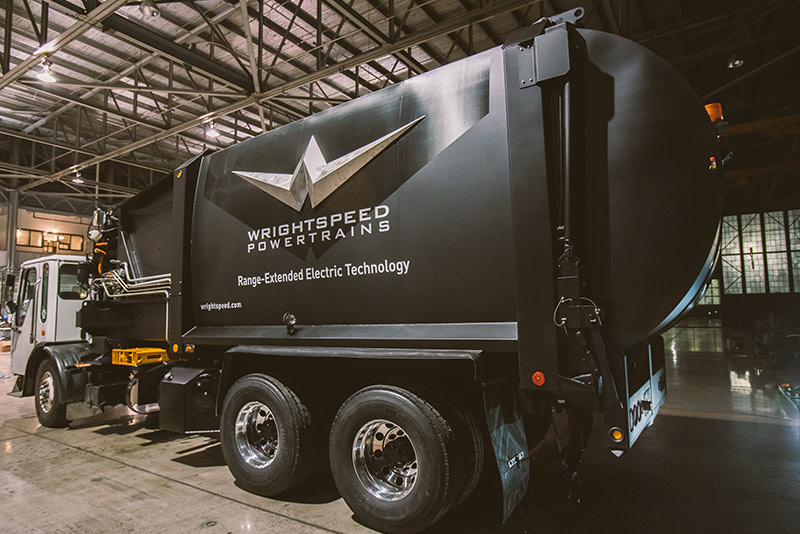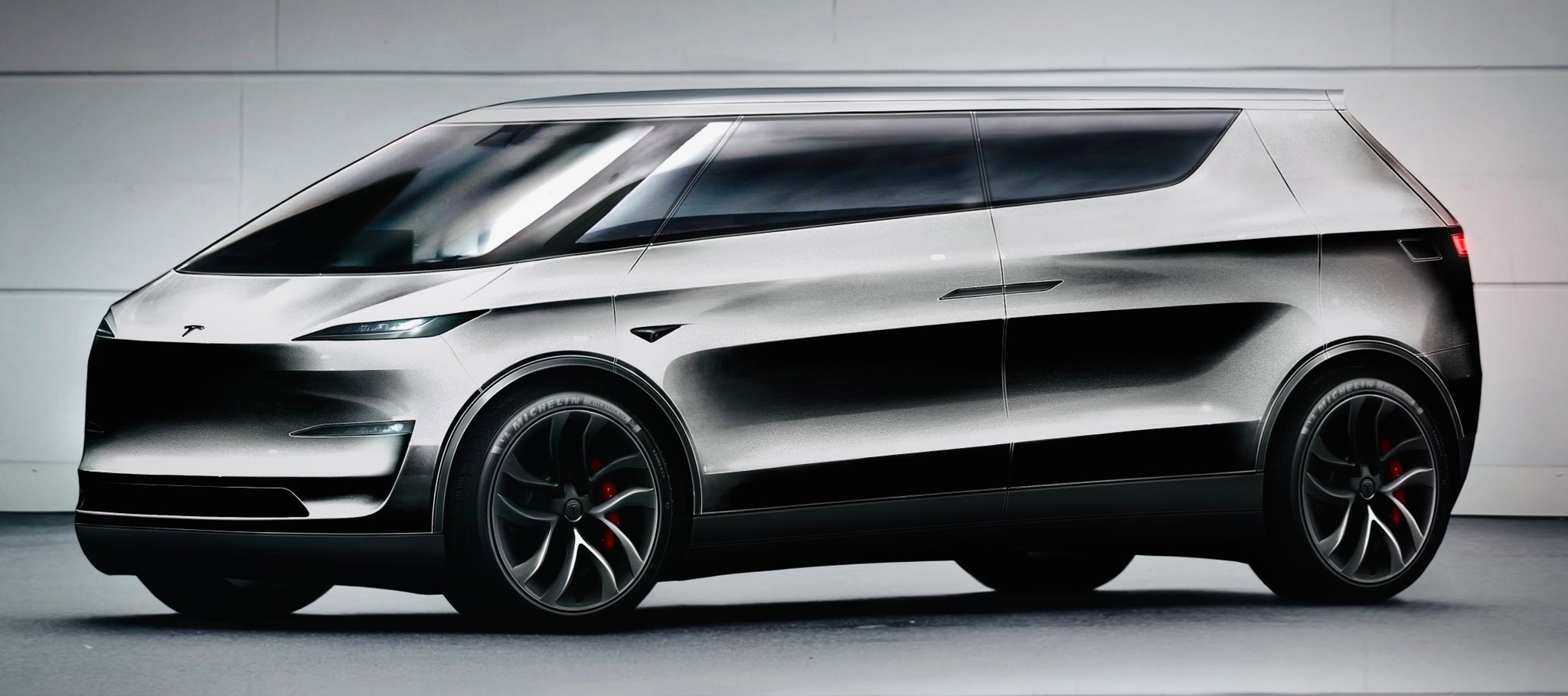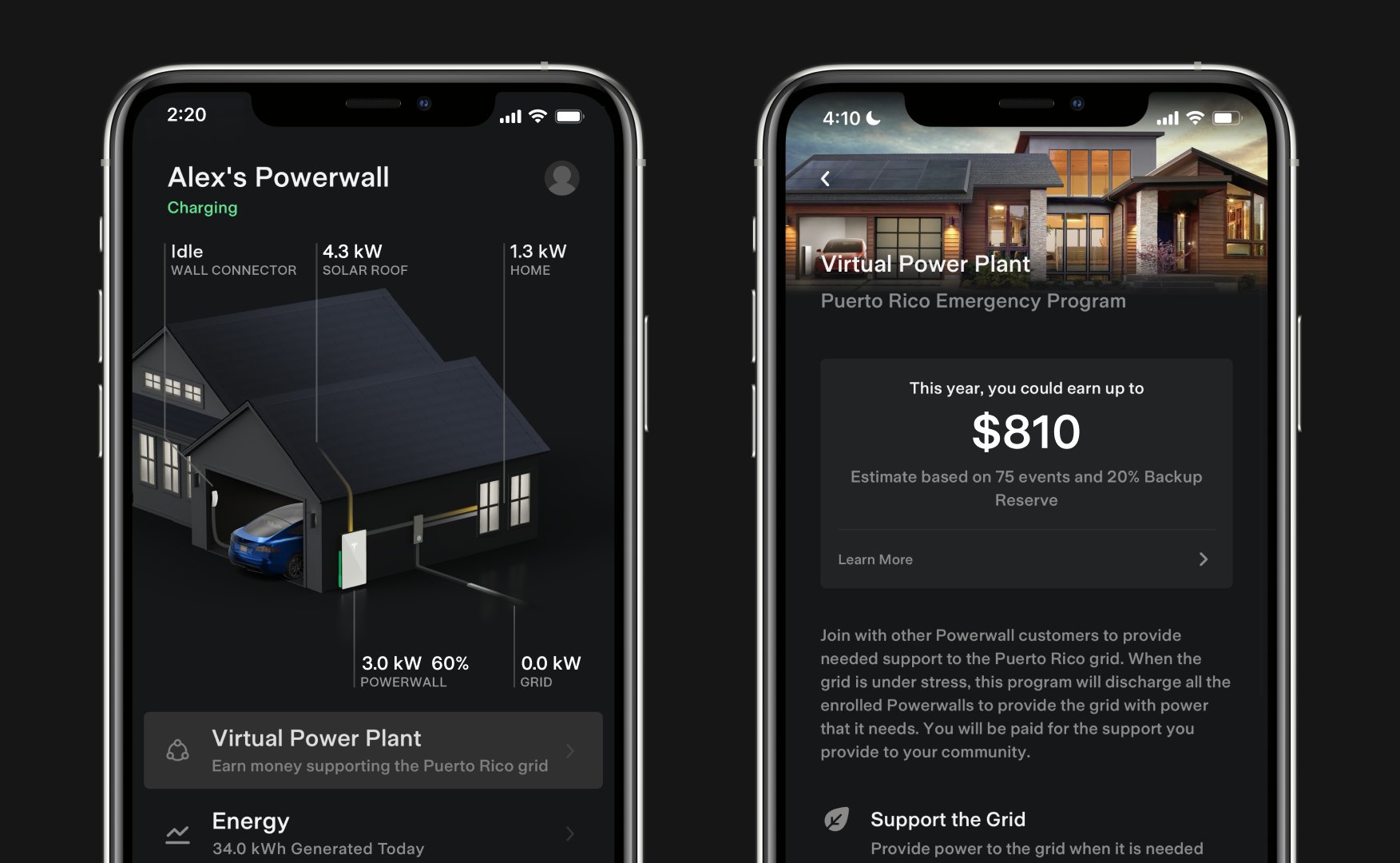News
Tesla co-founder unveils electric garbage truck

The global transition from combustion engine to all-electric vehicle continues to move into new sectors as Wrightspeed has just released its first fleet of range-extended electric refuse trucks. The powertrain represents a new era in vehicle propulsion, repowering a generation of lighter, quieter, and more efficient vehicle fleets for urban streets.
Wrightspeed’s commercial application of the range-extended, turbine-electric powertrain is the heavy-duty Class 8 Freightliner, which will be delivered to The Ratto Group, a Sonoma County solid waste collection and recycling business. The Class 8 Freightliner is the first of at least fifteen electric vehicles that will be integrated into the trash company’s fleet over the next year, according to Tim Dummer, Wrightspeed’s chief business officer. Dummer, an engineering and commercialization executive, was brought into Wrightspeed in October, 2016 as part of the company’s ramp-up of its Range-extended Electric Vehicle (REV) powertrain systems.
Called The Route™, Wrightspeed’s REV powertrain is optimized for the refuse industry and can be customized to fit a variety of today’s heavy-duty truck platforms, replacing both the engine and the transmission. Much of the growing demand for the award-winning The Route is due to Wrightspeed’s founder, Ian Wright, one of the original co-founders of Tesla Motors. After his departure from Tesla Motors in 2003, Wright had a vision that electric vehicles could deliver high-performance without compromising intrinsic efficiency. Using turbines and applying electric vehicle principles to urban, heavy-duty trucks, The Route powertrain was the result.
The Wrightspeed system can power a 66,000-pound GVW truck, delivering up to 24 miles on battery power before the range extender kicks in. After that, range is nearly unlimited as long as there is fuel for the turbine. With fuel efficiency the equivalent of up to 7 mpg in combined electricity-liquid fuel operation, the powertrain can slash annual fuel consumption by 70 percent or more compared with the average diesel refuse truck. CEO Lou Ratto says he expects a fuel savings of at least 50 percent.
Eventually, all of Ratto’s 130 residential trash and recycling trucks may be retrofitted with the turbine-electric powertrain. This is an ambitious undertaking, as a refuse truck’s demanding duty cycle drains an electric powertrain’s batteries quickly. Think start, then stop. Start, stop. Wrightspeed’s electric powertrain drives more low-end torque to the wheels than conventional diesel engines, with less fuel, emissions, and noise.
Wrightspeed, in a sense, is recycling Ratto’s trash collection trucks. The Wrightspeed/ Ratto contract is thought to be in the range of $3 million to $5 million.
A new refuse truck that meets all California air quality standards costs more than $500,000, so Wrightspeed’s retrofit of Ratto’s existing trucks makes the system more cost-effective, Van Amburg relates. Sonoma County officials like the trash fleet electrification program because they see it as a means of improving local air quality, says Efren Carrillo, chairman of the Sonoma County Board of Supervisors. Ratto concurs. “Here in Sonoma County there is a lot of environmental consciousness, and we are always looking for ways to be cleaner, environmentally friendly, and help the bottom line. And the idea that [by electrifying the trucks] we can do this and get off the air quality rollercoaster and stop battling to meet California emissions requirements— that makes it all worthwhile.”
ALSO SEE: The Tesla Semi will shake the trucking industry to its roots
Wrightspeed featured its powertrain technology alongside Mack Trucks at Waste Expo 2016 in Las Vegas and signed a $30+ million agreement with NZ Bus, symbolizing multinational and multimodal demand for Wrightspeed’s powertrain technology. In June, the company was named a Technology Pioneer by the World Economic Forum (WEF), and CEO Wright was an invited presenter to the International Business Council of the World Economic Forum. He will be a keynote speaker at the upcoming SAE 2016 Range Extenders for Electric Vehicles Symposium in Knoxville, 2-3 November, 2016.
Elon Musk
Tesla Supercharger Diner food menu gets a sneak peek as construction closes out
What are you ordering at the Tesla Diner?

The Tesla Supercharger Diner in Los Angeles is nearing completion as construction appears to be winding down significantly. However, the more minor details, such as what the company will serve at its 50s-style diner for food, are starting to be revealed.
Tesla’s Supercharger Diner is set to open soon, seven years after CEO Elon Musk first drafted the idea in a post on X in 2018. Musk has largely come through on most of what he envisioned for the project: the diner, the massive movie screens, and the intended vibe are all present, thanks to the aerial and ground footage shared on social media.
We already know the Diner will be open 24/7, based on decals placed on the front door of the restaurant that were shared earlier this week. We assume that Tesla Optimus will come into play for these long and uninterrupted hours.
The Tesla Diner is basically finished—here’s what it looks like
As far as the food, Tesla does have an email also printed on the front door of the Diner, but we did not receive any response back (yet) about what cuisine it will be offering. We figured it would be nothing fancy and it would be typical diner staples: burgers, fries, wings, milkshakes, etc.
According to pictures taken by @Tesla_lighting_, which were shared by Not a Tesla App, the food will be just that: quick and affordable meals that diners do well. It’s nothing crazy, just typical staples you’d find at any diner, just with a Tesla twist:
Tesla Diner food:
• Burgers
• Fries
• Chicken Wings
• Hot Dogs
• Hand-spun milkshakes
• And more https://t.co/kzFf20YZQq pic.twitter.com/aRv02TzouY— Sawyer Merritt (@SawyerMerritt) July 17, 2025
As the food menu is finalized, we will be sure to share any details Tesla provides, including a full list of what will be served and its prices.
Additionally, the entire property appears to be nearing its final construction stages, and it seems it may even be nearing completion. The movie screens are already up and showing videos of things like SpaceX launches.
There are many cars already using the Superchargers at the restaurant, and employees inside the facility look to be putting the finishing touches on the interior.
🚨 Boots on the ground at the Tesla Diner:
— TESLARATI (@Teslarati) July 17, 2025
It’s almost reminiscent of a Tesla version of a Buc-ee’s, a southern staple convenience store that offers much more than a traditional gas station. Of course, Tesla’s version is futuristic and more catered to the company’s image, but the idea is the same.
It’s a one-stop shop for anything you’d need to recharge as a Tesla owner. Los Angeles building permits have not yet revealed the date for the restaurant’s initial operation, but Tesla may have its eye on a target date that will likely be announced during next week’s Earnings Call.
News
Tesla’s longer Model Y did not scale back requests for this vehicle type from fans
Tesla fans are happy with the new Model Y, but they’re still vocal about the need for something else.

Tesla launched a slightly longer version of the Model Y all-electric crossover in China, and with it being extremely likely that the vehicle will make its way to other markets, including the United States, fans are still looking for something more.
The new Model Y L in China boasts a slightly larger wheelbase than its original version, giving slightly more interior room with a sixth seat, thanks to a third row.
Tesla exec hints at useful and potentially killer Model Y L feature
Tesla has said throughout the past year that it would focus on developing its affordable, compact models, which were set to begin production in the first half of the year. The company has not indicated whether it met that timeline or not, but many are hoping to see unveilings of those designs potentially during the Q3 earnings call.
However, the modifications to the Model Y, which have not yet been officially announced for any markets outside of China, still don’t seem to be what owners and fans are looking forward to. Instead, they are hoping for something larger.
A few months ago, I reported on the overall consensus within the Tesla community that the company needs a full-size SUV, minivan, or even a cargo van that would be ideal for camping or business use.
Tesla is missing one type of vehicle in its lineup and fans want it fast
That mentality still seems very present amongst fans and owners, who state that a full-size SUV with enough seating for a larger family, more capability in terms of cargo space for camping or business operation, and something to compete with gas cars like the Chevrolet Tahoe, Ford Expedition, or electric ones like the Volkswagen ID.BUZZ.
We asked the question on X, and Tesla fans were nearly unanimously in support of a larger SUV or minivan-type vehicle for the company’s lineup:
🚨 More and more people are *still* saying that, despite this new, longer Model Y, Tesla still needs a true three-row SUV
Do you agree? https://t.co/QmbRDcCE08 pic.twitter.com/p6m5zB4sDZ
— TESLARATI (@Teslarati) July 16, 2025
Here’s what some of the respondents said:
100% agree, we need a larger vehicle.
Our model Y is quickly getting too small for our family of 5 as the kids grow. A slightly longer Y with an extra seat is nice but it’s not enough if you’re looking to take it on road trips/vacations/ kids sports gear etc.
Unfortunately we…
— Anthony Hunter (@_LiarsDice_) July 17, 2025
Had to buy a Kia Carnival Hybrid because Tesla doesn’t have a true 3 row vehicle with proper space and respectable range. pic.twitter.com/pzwFyHU8Gi
— Neil, like the astronaut (@Neileeyo) July 17, 2025
Agreed! I’m not sure who created this but I liked it enough to save it. pic.twitter.com/Sof5nMehjS
— 🦉Wise Words of Wisdom – Inspirational Quotes (IQ) (@WiseWordsIQ) July 16, 2025
Tesla is certainly aware that many of its owners would like the company to develop something larger that competes with the large SUVs on the market.
However, it has not stated that anything like that is in the current plans for future vehicles, as it has made a concerted effort to develop Robotaxi alongside the affordable, compact models that it claims are in development.
It has already unveiled the Robovan, a people-mover that can seat up to 20 passengers in a lounge-like interior.
The Robovan will be completely driverless, so it’s unlikely we will see it before the release of a fully autonomous Full Self-Driving suite from Tesla.
Energy
Tesla launches first Virtual Power Plant in UK – get paid to use solar
Tesla has launched its first-ever Virtual Power Plant program in the United Kingdom.

Tesla has launched its first-ever Virtual Power Plant program in the United Kingdom. This feature enables users of solar panels and energy storage systems to sell their excess energy back to the grid.
Tesla is utilizing Octopus Energy, a British renewable energy company that operates in multiple markets, including the UK, France, Germany, Italy, Spain, Australia, Japan, New Zealand, and the United States, as the provider for the VPP launch in the region.
The company states that those who enroll in the program can earn up to £300 per month.
Tesla has operated several VPP programs worldwide, most notably in California, Texas, Connecticut, and the U.S. territory of Puerto Rico. This is not the first time Tesla has operated a VPP outside the United States, as there are programs in Australia, Japan, and New Zealand.
This is its first in the UK:
Our first VPP in the UK
You can get paid to share your energy – store excess energy in your Powerwall & sell it back to the grid
You’re making £££ and the community is powered by clean energy
Win-win pic.twitter.com/evhMtJpgy1
— Tesla UK (@tesla_uk) July 17, 2025
Tesla is not the only company that is working with Octopus Energy in the UK for the VPP, as it joins SolarEdge, GivEnergy, and Enphase as other companies that utilize the Octopus platform for their project operations.
It has been six years since Tesla launched its first VPP, as it started its first in Australia back in 2019. In 2024, Tesla paid out over $10 million to those participating in the program.
Participating in the VPP program that Tesla offers not only provides enrolled individuals with the opportunity to earn money, but it also contributes to grid stabilization by supporting local energy grids.
-

 Elon Musk1 day ago
Elon Musk1 day agoWaymo responds to Tesla’s Robotaxi expansion in Austin with bold statement
-

 News1 day ago
News1 day agoTesla exec hints at useful and potentially killer Model Y L feature
-

 Elon Musk2 days ago
Elon Musk2 days agoElon Musk reveals SpaceX’s target for Starship’s 10th launch
-

 Elon Musk3 days ago
Elon Musk3 days agoTesla ups Robotaxi fare price to another comical figure with service area expansion
-

 News1 day ago
News1 day agoTesla’s longer Model Y did not scale back requests for this vehicle type from fans
-

 News1 day ago
News1 day ago“Worthy of respect:” Six-seat Model Y L acknowledged by Tesla China’s biggest rivals
-

 News2 days ago
News2 days agoFirst glimpse of Tesla Model Y with six seats and extended wheelbase
-

 Elon Musk2 days ago
Elon Musk2 days agoElon Musk confirms Tesla is already rolling out a new feature for in-car Grok


















